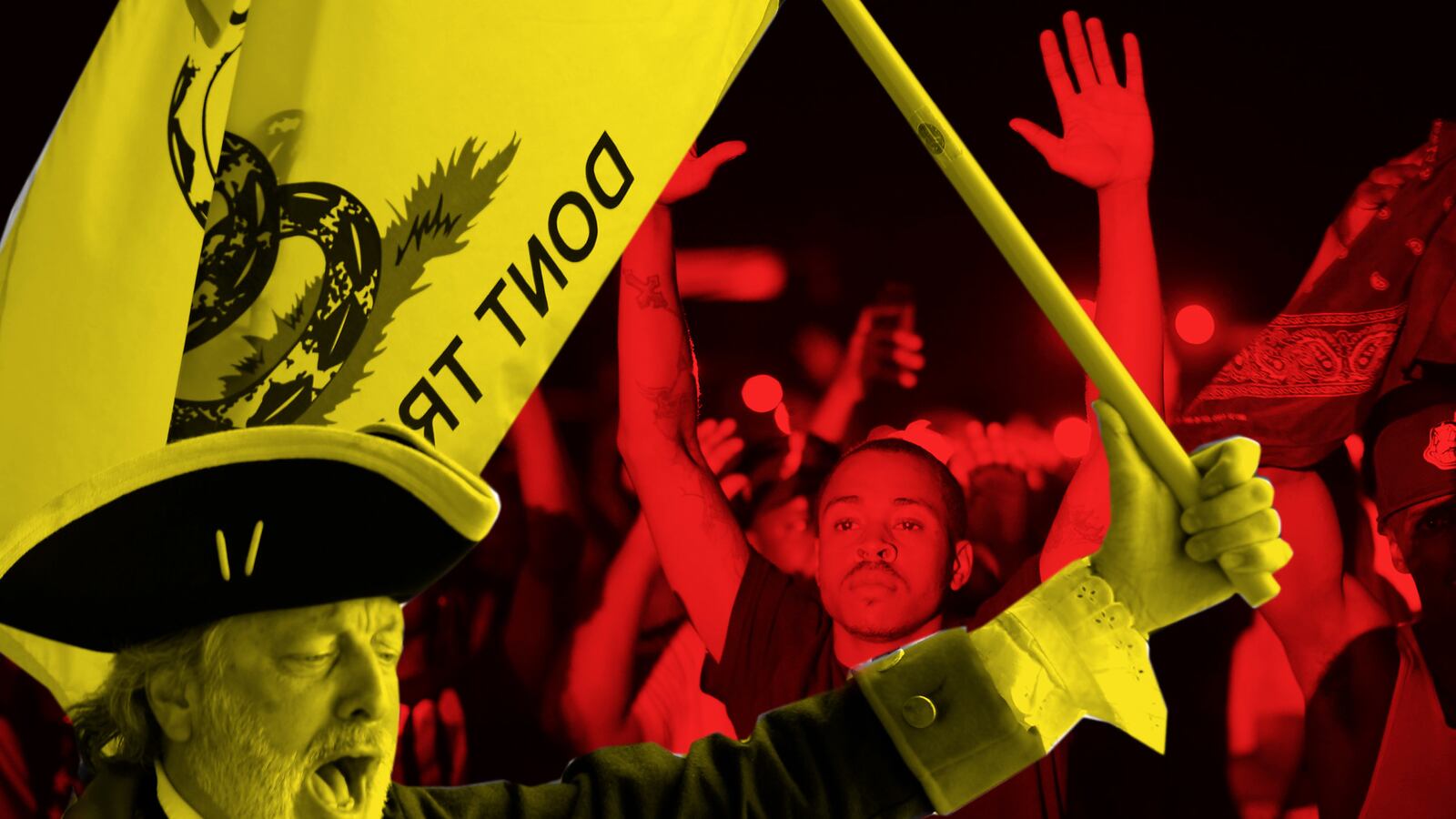New York City Mayor Bill de Blasio should know better.
As his relations with the NYPD frayed even further, he tried to flip the script and blame the media for their coverage of the divisive police protests.
“Are you going to keep dividing us?” asked de Blasio. “Twenty-five thousand people marched down one of our streets a few days back, absolutely peaceful, no chants like that, peacefully calling for what they believed in as American citizens, and the NYPD protected them.”
The New York City mayor was understandably frustrated at being asked whether he approved of protest chants like “NYPD, KKK, how many kids did you kill today?”
Ironically, it’s the same frustration Tea Partiers have felt for more than five years at being defined by the smattering of Confederate flags at their rallies.
No movement wants to be defined by its fringe. And no issue should be defined by its outliers because it paints a false picture.
But that standard should apply not only to the protesters but also to the original reason for the protests.
The protests have presented a picture of a nationwide epidemic of young black men being gunned down in the street by racist police. We’ve been presented with a picture of a justice system so compromised by institutional racism it’s neither equal nor just. Of a society that needs to be told that black lives matter.
The problem is that it’s a false picture.
Twenty years of data from the Bureau of Justice Statistics recently compiled by Steven Malanga at City Journal, measuring everything from police behavior at traffic stops to use of force, found:
• The number of people having any interaction with police declined;
• Reports of police use of force declined;
• The number of African Americans reporting police use of force declined;
• In 2011, 88 percent of those stopped by police thought officers acted properly;
• 83 percent of African Americans thought officers acted properly;
• 80 percent of drivers thought stops were legitimate. 68 percent of African Americans thought stops were legitimate;
• African Americans thought stops initiated by white officers were just as legitimate as those initiated by black officers.
So based on 20 years of data, an accurate picture of our society is one where crime is declining, violence is declining, interactions with police are declining, use of force is declining, and the overwhelming majority of interactions with law enforcement—regardless of race—are regarded as positive.
These clear, data-driven trends don’t mean we live in anything resembling a utopia. I suffer from no delusion that the justice system treats black and white equally. Injustices occur. Race, among other factors, plays a role in that inequality. But those acknowledgements don’t add up to a world where the biracial son of New York’s mayor needs to live in fear of the police department that protects his family around the clock.
If Mayor de Blasio wonders why a plane flew over the Hudson River trailing a banner that read “de Blasio, our backs have turned to you,” he should know it’s in large part because he has failed the standard he asks of others. He has contributed to a false picture of law enforcement based on isolated injustices. These injustices need to be confronted and bipartisan reforms like body cameras on cops enacted. But appearing to be closer to protesters than the police only deepens distrust and divides the city the mayor is supposed to lead.
So yes, the extremists in their crowd should not define the police protesters. But outliers also should not define the issue that drove the protesters into the street. We separate the search for justice from the search for truth at our peril.






